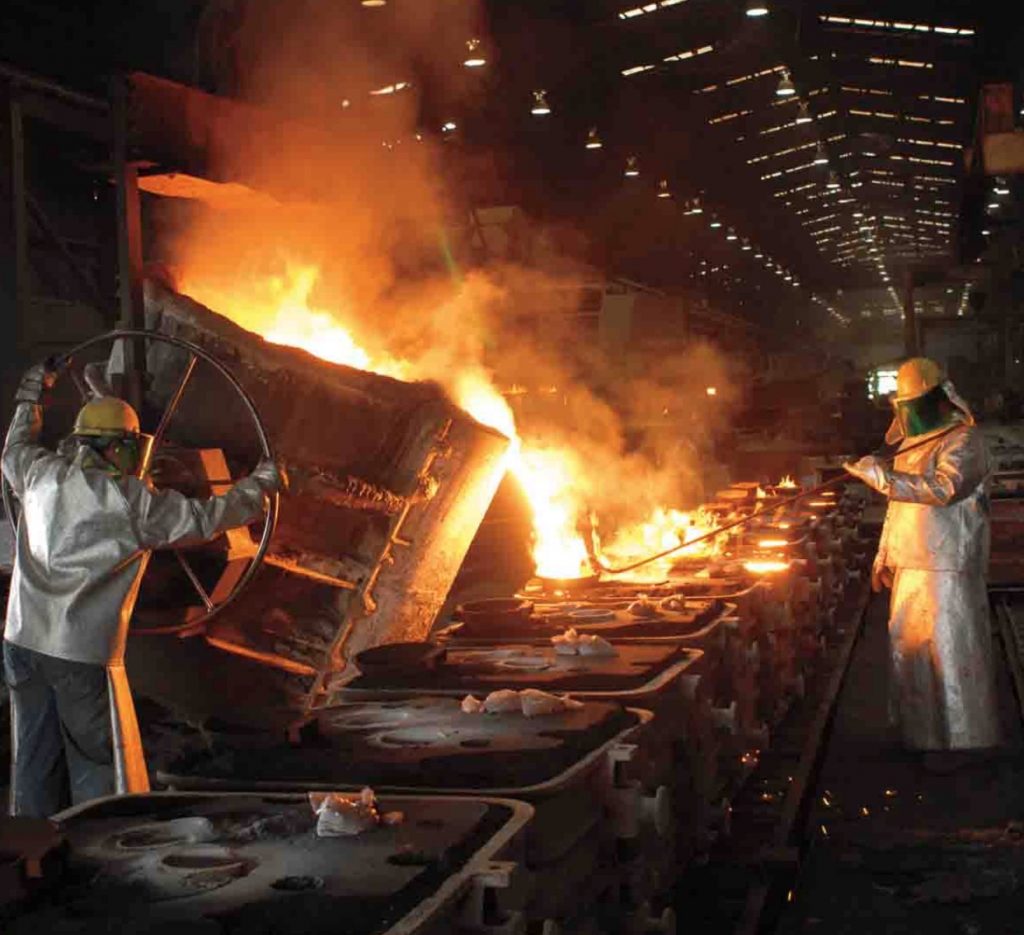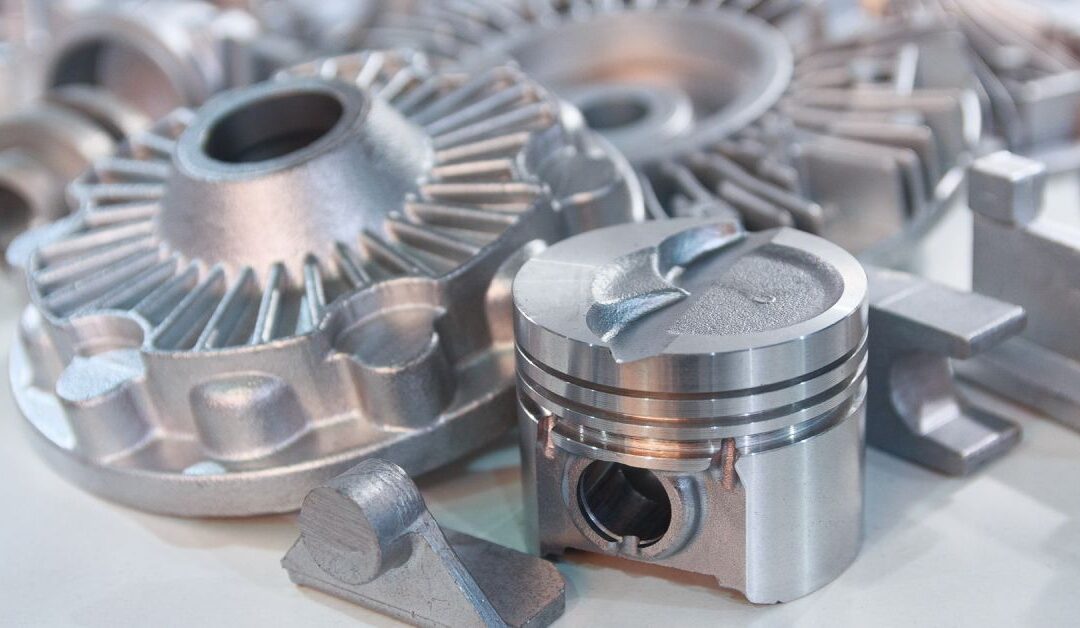Recognizing the Metal Castings Refine: A Comprehensive Overview for Beginners
The Metal Casting process is a fundamental technique in producing that transforms molten steel right into solid forms. Newbies must grasp the numerous approaches entailed, such as sand spreading and die spreading. Recognizing the materials, design concepts, and precaution is equally vital. Each aspect plays a critical function in achieving effective end results. As one browses these ins and outs, the concern of just how to enhance each action for boosted results comes to be progressively important.
The Essentials of Steel Casting
Metal Casting has advanced over centuries, its essential concepts stay important and regular to the manufacturing procedure. At its core, Metal Casting involves the improvement of molten steel right into strong objects with various strategies. The process begins with the development of a mold, which specifies the shape of the end product. As soon as the mold is prepared, steel is warmed to its melting point and poured right into the dental caries. After cooling, the steel solidifies, taking the shape of the mold and mildew.
There are numerous casting techniques, consisting of sand spreading, investment spreading, and pass away spreading, each with one-of-a-kind advantages and applications. The option of technique depends on aspects such as manufacturing quantity, product type, and preferred precision. Once cast, the final item might go through extra processes like machining or surface therapy to attain the called for finish and specs. Recognizing these essentials is vital for any individual thinking about the area of Metal Casting.

Comprehending Materials Utilized in Steel Casting
Products play an essential function in the Metal Casting procedure, influencing the final product's residential or commercial properties and efficiency. Various metals are made use of, including light weight aluminum, bronze, steel, and iron, each offering unique features suited for particular applications. Aluminum is corrosion-resistant and lightweight, making it suitable for automotive parts. Iron, particularly cast iron, is favored for its superb wear resistance and toughness. Steel offers high stamina and flexibility, often made use of in heavy equipment components. Bronze, understood for its deterioration resistance and machinability, is generally utilized in marine applications.
In addition to the steels, numerous casting products, such as sand, plaster, and ceramic, are made use of to develop mold and mildews. Sand casting, one of the most widespread method, makes use of silica sand because of its thermal security and capacity to create elaborate shapes. Plaster and ceramic mold and mildews use better information but might require even more complicated processes. The option of products directly influences the efficiency, cost, and quality of the spreading procedure.
The Style Process: From Principle to Plan
The design process in Metal Casting starts with the first idea growth, where concepts are created and evaluated. This is followed by the application of CAD modeling techniques, enabling precise visualizations of the design. The blueprint completion actions guarantee that all requirements are properly documented for production.
Initial Principle Advancement
Initial principle advancement marks a critical stage in the Metal Casting process, where ideas transform into tangible designs. Throughout this phase, developers collaborate with stakeholders and designers to brainstorm and fine-tune initial concepts. They consider variables such as performance, appearances, and manufacturability, making sure that the design meets the called for specifications and performance criteria. Sketches and outlines are produced to visualize the ideas, permitting initial analyses of feasibility and cost-effectiveness. This phase also entails identifying products and possible casting techniques that line up with the design objectives. Ultimately, first idea growth lays the foundation for a thorough plan, directing the succeeding stages of the casting process and making sure an effective shift from principle to truth.
CAD Modeling Techniques
Changing ideas right into accurate layouts, CAD modeling techniques play a crucial duty in the Metal Casting process. These techniques use innovative software to create in-depth three-dimensional versions that accurately mirror the desired item. By using devices such as parametric modeling, strong modeling, and surface area modeling, designers can manipulate measurements and forms with convenience. CAD systems also assist in simulation and evaluation, permitting for the identification of potential defects before production starts. This proactive strategy lowers product waste and maximizes the style for manufacturability. Additionally, CAD models can be easily modified, allowing quick iterations based on responses. Essentially, CAD modeling works as the backbone of the design procedure, linking the space in between first principles and the eventual production-ready layouts.
Plan Completion Tips
Complying with the production of comprehensive CAD versions, the following phase includes blueprint finalization, which is important in converting digital designs right into workable prepare for manufacturing. This procedure begins with reviewing the CAD versions for precision and compliance with requirements. As soon as confirmed, the dimensions, resistances, and material specifications are meticulously outlined to guarantee quality. Including notes and notes aids communicate essential details regarding casting processes, surface area coatings, and assembly needs. The wrapped up blueprint undergoes a strenuous authorization process, usually entailing partnership with designers and production groups to deal with any kind of prospective issues. Besides alterations are made and approvals obtained, the blueprint is officially released, functioning as the fundamental file for the subsequent phases of Metal more info here Casting, consisting of pattern making and mold style.
The Steel Casting Strategies Explained

Metal Casting methods include a variety of techniques utilized to form liquified metal into wanted types. These strategies vary according to the kind of material, complexity of the layout, and manufacturing quantity. Sand casting is one of one of the most typical approaches, involving the creation of a mold and mildew from sand to hold the molten metal. Investment spreading, or lost-wax casting, enables intricate layouts by making use of a wax pattern that is dissolved. Die casting utilizes high-pressure shot of molten steel into a mold and mildew, ideal for mass manufacturing. Other approaches include permanent mold and mildew casting, which utilizes reusable molds, and centrifugal spreading, where rotational forces assist in filling the mold. Each strategy has its applications and advantages, making it important for producers to pick the ideal method based on their details requirements and needs. Recognizing these techniques is vital for anybody included in the Metal Casting procedure.
Finishing Processes: Enhancing Your Casted Item

Completing processes play a vital function in enhancing the quality and look of casted products. Different surface treatment methods, such as sprucing up and finishing, are utilized to boost longevity and looks. In addition, quality inspection methods guarantee that the final product fulfills specified standards and performance demands.
Surface Therapy Techniques
A variety of surface treatment methods play an important function in boosting the high quality and longevity of casted items. These techniques consist of methods such as shot blasting, brightening, and covering. Shot blasting efficiently removes surface area blemishes, enhancing the visual and practical features of the casting. Polishing offers a smooth coating, which is especially vital for ornamental applications and components needing minimal rubbing. Layer methods, such as electroplating or powder layer, offer extra defense against rust and wear, making certain longevity. Surface therapies can boost adhesion for succeeding processes, such as painting or bonding. By employing these methods, suppliers can attain premium surface top quality, which is vital for the performance and life expectancy of Metal Casting in various applications.
High Quality Inspection Techniques
Effective quality evaluation approaches are vital for assuring the honesty and efficiency of casted products after the finishing processes. Various techniques are utilized to examine the quality of Metal Casting, including visual inspection, dimensional checks, and non-destructive screening (NDT) Aesthetic evaluation permits the recognition of surface area problems, while dimensional checks ensure that products satisfy specified tolerances. NDT approaches, such as ultrasonic screening and radiographic assessment, supply much deeper understandings right into internal integrity without harming the spreadings. In addition, mechanical testing, such as tensile and hardness tests, reviews material homes - Wisconsin Aluminum Foundry. By using a mix of these approaches, makers can improve product high quality and integrity, eventually resulting in greater customer fulfillment and minimized production prices
Safety Considerations in Metal Casting
While the Metal Casting procedure uses various benefits, it likewise provides a variety of security risks that need to be meticulously managed. Employees in casting centers are exposed to high temperature levels, molten steels, and unsafe materials, which can cause serious injuries if correct safety measures are not taken. Individual safety devices (PPE) such as heat-resistant gloves, face guards, and protective clothes is important to reduce threats.
Furthermore, the presence of fumes and dust demands proper ventilation systems to assure air high quality - Aluminum Foundry. Regular training on security procedures is important for all workers to identify prospective hazards and react successfully. Emergency treatments must be established, consisting of fire security steps and emergency treatment availability. Maintenance of devices and appropriate handling of products further add to a safer working browse around this site setting. By prioritizing these safety factors to consider, Metal Casting operations can secure their labor force and keep reliable manufacturing procedures
Often Asked Inquiries
What Are the Environmental Impacts of Metal Casting?
Metal Casting can lead to environmental impacts such as air and water contamination, source deficiency, and energy consumption. Additionally, check here incorrect waste monitoring and discharges from shops add to environmental disturbances and health and wellness risks for close-by areas.
How Do I Pick the Right Metal for Spreading?
To pick the best steel for spreading, one have to take into consideration variables such as mechanical buildings, rust resistance, thermal conductivity, and expense. Examining the desired application and ecological conditions is essential for perfect option.
What Are the Usual Flaws in Metal Casting?
Usual issues in Metal Casting include porosity, shrinking, sand incorporation, and misruns. These problems usually arise from inappropriate material selection, insufficient layout, or problems in the casting process, influencing the end product's quality and efficiency.
Exactly How Can I Improve My Steel Casting Skills?
To improve Metal Casting skills, one must exercise continually, research spreading techniques, analyze previous jobs for flaws, seek responses from experienced casters, and continually explore various products and approaches to boost proficiency and understanding.
What Is the Cost of Starting a Metal Casting Business?
Beginning a metal casting company commonly requires a preliminary financial investment of $5,000 to $50,000, depending on devices, materials, and center prices. Factors like area and scale can greatly affect total startup costs.
The Metal Casting procedure is a fundamental method in making that changes molten steel into solid kinds. Newbies need to comprehend the different methods involved, such as sand casting and pass away casting. There are several casting methods, consisting of sand spreading, investment spreading, and pass away casting, each with special benefits and applications. Financial investment casting, or lost-wax casting, permits for elaborate designs by making use of a wax pattern that is melted away. Other methods include irreversible mold and mildew casting, which uses multiple-use mold and mildews, and centrifugal spreading, where rotational forces assist in loading the mold and mildew.